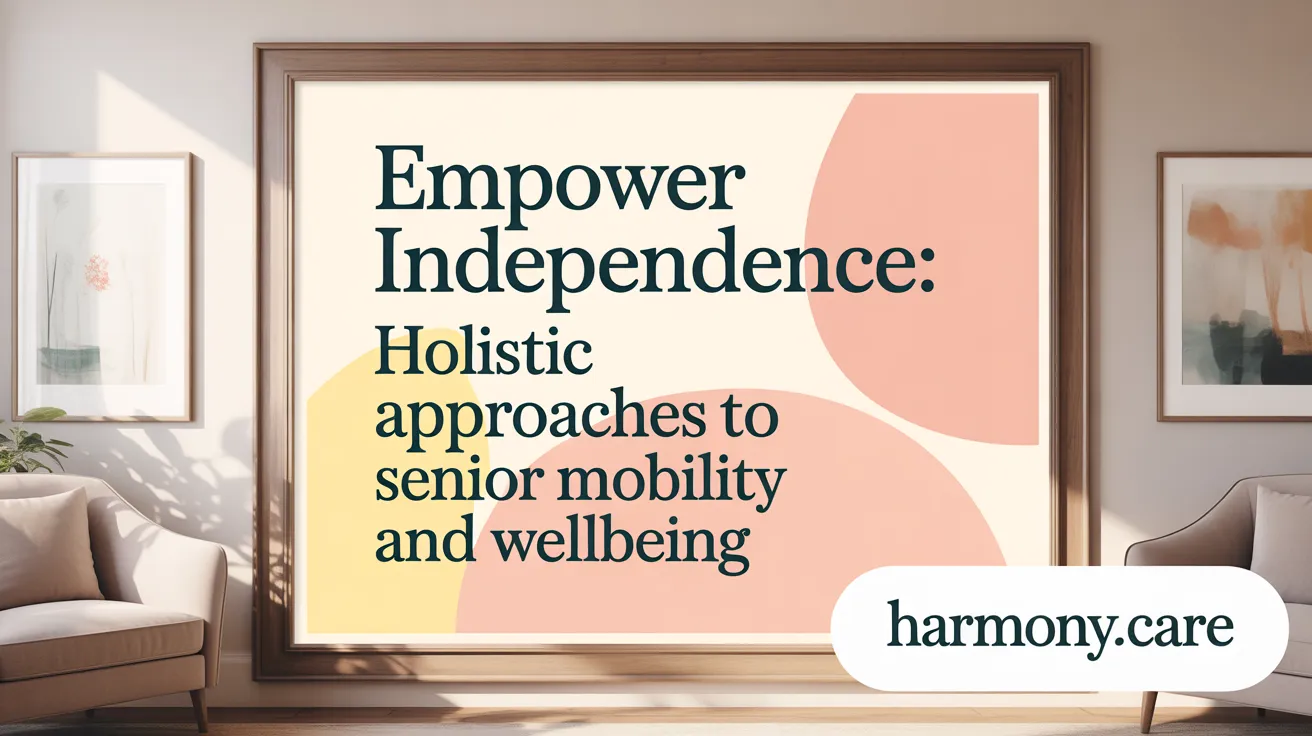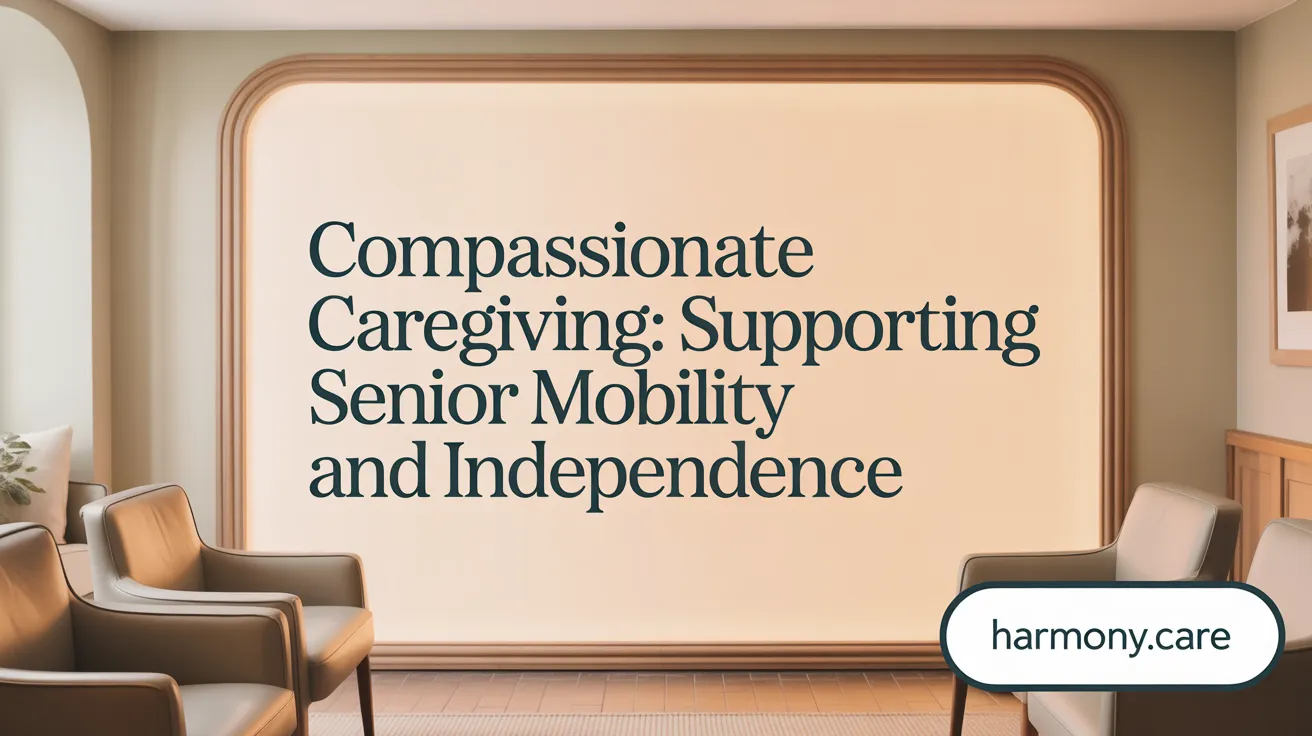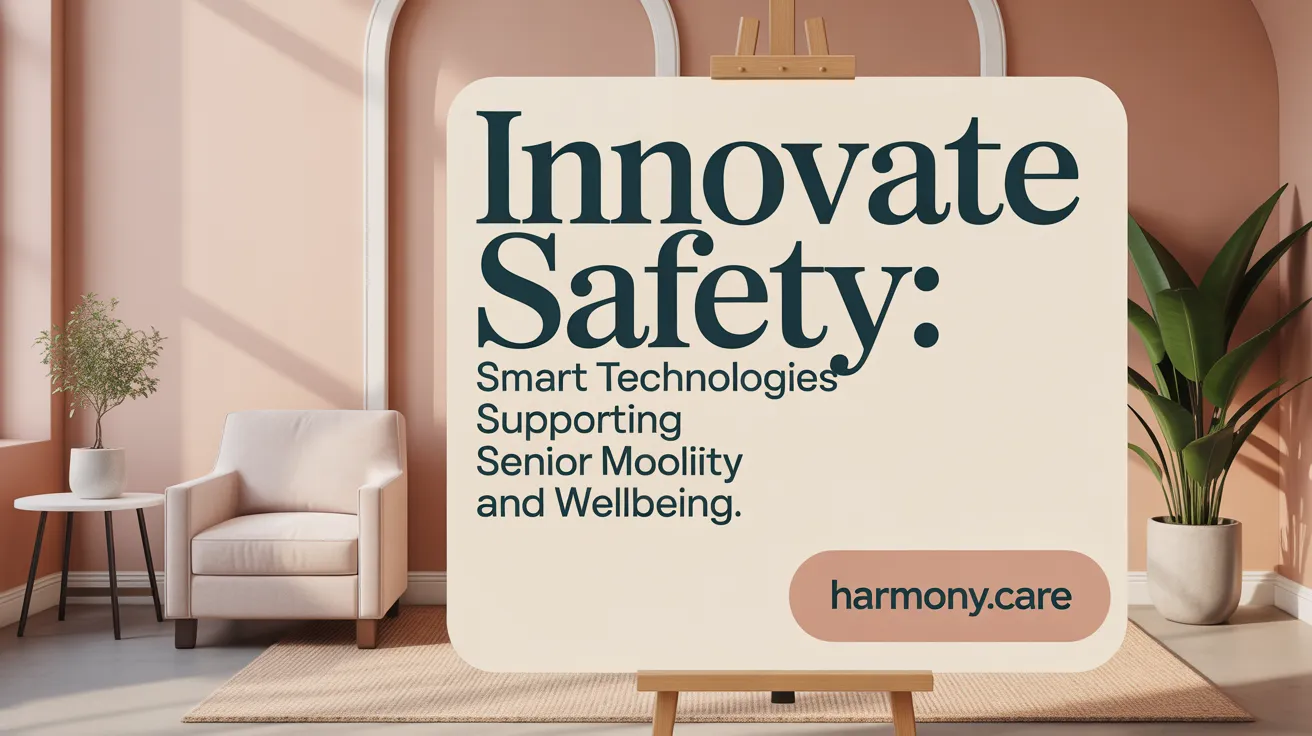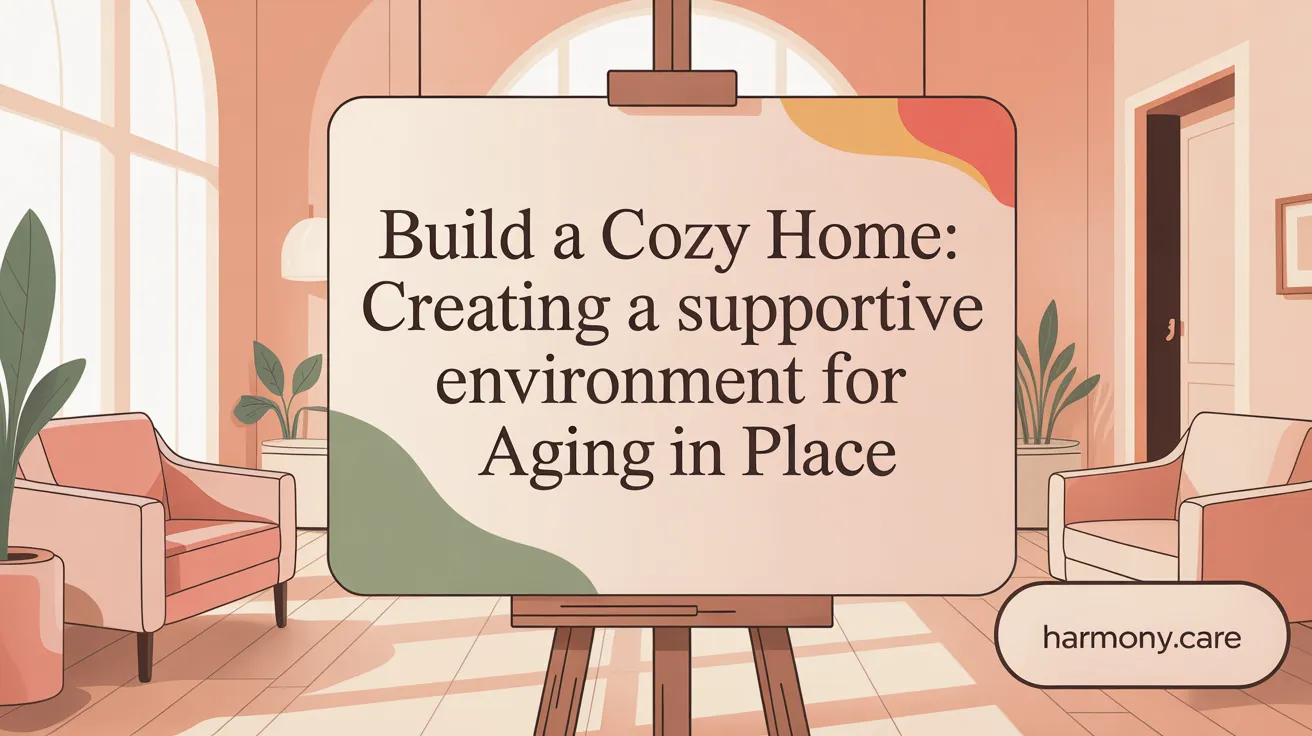Introduction to Supporting Senior Mobility at Home
Maintaining mobility is vital for seniors to preserve independence, safety, and quality of life within their home environments. As aging can present challenges such as muscle weakness, balance impairment, and joint stiffness, it is crucial to adopt multifaceted strategies that support safe movement and reduce risks of falls. This article explores comprehensive methods, assistive technologies, caregiving practices, and evidence-based interventions designed to empower seniors to move confidently and live comfortably in their own homes.
Comprehensive Strategies to Support Senior Mobility at Home

What are effective strategies and techniques for supporting senior mobility in home settings?
Supporting senior mobility at home involves a multifaceted approach designed to enhance safety, independence, and comfort. One of the most important steps is to modify the living environment to reduce fall risks. This includes installing grab bars in bathrooms, ramps instead of stairs, widening doorways, and ensuring pathways are free of clutter and slip-resistant. These adjustments create safer, more accessible spaces for movement.
Using assistive devices tailored to individual needs is also crucial. Properly fitted walkers, canes, and wheelchairs can support stability and ease of movement. Ensuring these aids are correctly designed and adjusted, combined with training on their proper use, helps seniors feel more confident and reduces the likelihood of falls.
Physical activity plays a vital role in maintaining mobility. Personalized exercise plans that include strength, balance, and flexibility exercises such as tai chi or physiotherapy can prevent decline. Regular participation not only improves physical capacity but also boosts emotional well-being.
Collaborating with healthcare professionals is essential for accurate assessments and developing tailored interventions. These experts can recommend the most appropriate devices, exercises, and home modifications, ensuring safety and effectiveness.
Community resources and support services further enhance mobility efforts. Home health care providers can assist with daily activities, medication management, and emotional support. Access to local programs, transportation services, and social activities encourages continued engagement and reduces isolation.
Planning and utilizing available programs, whether government-funded, nonprofit, or local community initiatives, can ease the financial burden of modifications and support services. Combining environmental changes, assistive tools, physical activity, professional guidance, and community involvement creates a comprehensive system that helps seniors remain active, independent, and safe in their own homes.
Optimizing Use of Mobility Aids and Assistive Devices
How can mobility aids and assistive devices be used to support seniors at home?
Mobility aids and assistive devices serve as crucial tools that help seniors maintain their independence and safety within their living environments. Devices such as canes, walkers, wheelchairs, and stairlifts provide stability and support, enabling seniors to perform daily activities with greater confidence.
Selecting the right device involves personalized assessment. Healthcare professionals like physical therapists play a vital role in guiding seniors toward appropriate choices based on their physical abilities, lifestyle, and preferences. Proper fitting of these devices ensures comfort and safety, reducing the risk of injuries such as falls.
In addition to using mobility aids, home modifications significantly enhance safety. Installing grab bars in bathrooms, adding ramps instead of stairs, and ensuring well-lit, clutter-free pathways create an environment conducive to safe movement.
The combined use of mobility aids and home modifications not only facilitates aging in place but also alleviates some of the responsibilities placed on caregivers. Skilled use of these tools promotes independence, allowing seniors to remain active and engaged while reducing the risk of accidents and injuries inside the home.
Supporting mobility with assistive devices and environmental adaptations encourages seniors to stay mobile longer, helps manage common mobility challenges, and enhances overall quality of life.
Safety Modifications and Fall Prevention in the Home
What safety modifications and precautions can enhance mobility and prevent falls for seniors in their homes?
Creating a safe living environment is essential to help seniors maintain independence and reduce the risk of falls. Installing sturdy grab bars near toilets, in showers, and along staircases provides reliable support during movement. Properly secured handrails on both sides of staircases and ramps offer additional stability, especially for those with balance challenges.
Bright, well-placed lighting is vital; switches should be within easy reach, and motion-activated lights can improve visibility at night. Regularly removing clutter and securing or removing loose rugs prevents tripping hazards. In wet areas like bathrooms, non-slip mats greatly reduce slip risks, while installing night lights in bedrooms, hallways, and bathrooms ensures safe navigation after dark.
Supporting mobility also includes using assistive devices such as grab bars, raised toilet seats, and sturdy chairs that offer extra stability. Ensuring pathways are clear and furniture is arranged to allow easy, obstacle-free movement helps avoid accidents.
Additional measures involve engagement in balance and strength exercises like tai chi, which can improve stability over time. Wearing appropriate footwear with nonslip soles and scheduling routine eye and health check-ups help identify and mitigate potential issues early.
Implementing these modifications and precautions creates an environment that actively supports safety, reduces fall risks, and promotes confidence for seniors aging in place.
Caregiving Practices to Enhance Mobility and Independence

How can caregiving practices promote mobility and independence among seniors?
Caregiving practices play a vital role in helping seniors maintain their mobility and independence. One of the most effective strategies is encouraging regular physical activity. Simple activities like walking, chair yoga, tai chi, or tailored exercise programs can significantly improve strength, flexibility, and balance, which are essential for safe movement.
Ensuring the home environment is safe and accessible is equally important. Home modifications such as installing grab bars in the bathroom, adding ramps instead of stairs, widening doorways, and removing clutter create safer pathways that reduce the risk of falls. Proper lighting and slip-resistant flooring further support safe navigation.
Assistive devices like canes, walkers, and rolled scooters are crucial tools that support mobility. Caregivers can help seniors learn how to use these aids correctly, ensuring proper fit and comfort. Regular checks and maintenance of these devices guarantee they remain safe and effective.
Supporting social engagement also contributes to mobility and well-being. Participation in community programs, hobbies, and social activities keeps seniors mentally stimulated and motivated. Engaging in meaningful activities provides emotional benefits and encourages continued movement.
Equally important is involving seniors in decision-making about their care routines and daily activities. When seniors have a say in their mobility plans and chores, it fosters dignity, self-confidence, and a sense of control, which encourages them to stay active.
In summary, a holistic approach that combines physical activity, safe mobility assistance, social engagement, environmental modifications, and involving seniors in choices creates a supportive environment where independence can flourish.
Health Management and Exercise Routines to Improve Mobility
What health management and exercise routines help maintain or improve senior mobility?
For seniors, staying mobile is vital for independence and overall well-being. Regular physical activity plays a central role in maintaining and enhancing mobility. A well-rounded exercise routine should include several key components.
Firstly, aerobic exercises such as walking, swimming, or cycling are recommended. These activities should be performed for at least 150 minutes each week at a moderate intensity. Aerobic exercises support heart health, improve endurance, and help maintain a healthy weight.
Secondly, strength training is essential. Incorporating resistance exercises or activities like Tai Chi at least two days per week helps preserve muscle mass. Stronger muscles support joints better and make daily movements easier, reducing the risk of falls.
Thirdly, flexibility and balance exercises are crucial. Gentle stretching routines and exercises like standing on one leg or shifting weight enhance joint mobility and improve postural stability.
By combining these three exercise types—cardiovascular, strength, and balance training—older adults can significantly improve their overall mobility. These routines not only help prevent falls but also boost confidence and quality of life.
Regular health monitoring, including assessments of vision, medication effects, and physical function, further supports mobility efforts. Combining consistent exercise with proper health care creates a comprehensive strategy to keep seniors active, safe, and independent.
Resources and Support Services to Aid Senior Mobility at Home
Multiple resources and support services are available to help seniors maintain mobility and independence in their homes. Home health care plays a vital role, offering medical evaluations, physical therapy, wound care, and assistance with daily activities like bathing, dressing, and household chores. These services are flexible and can be scheduled according to individual needs, providing both short-term and long-term support.
Community programs also contribute significantly. Volunteer organizations provide companionship visits, meal delivery, and social engagement opportunities. Transportation assistance is crucial for seniors to attend medical appointments and run errands. Transit options include local public transportation, as well as specialized ride programs such as Uber or Lyft, and caregiver-oriented services like GoGoGrandparent and Veyo, which help seniors access safe, reliable rides.
Supporting caregivers is another essential component. Respite care programs, adult day care centers, and training services help family members and professional caregivers sustain their efforts while reducing burnout. These services enable caregivers to provide consistent support while maintaining their own well-being.
Emergency alert systems are critical safety tools that enable seniors to quickly summon help in case of falls or medical emergencies. These devices often include wearable buttons, home-based systems, or smartphone apps connected to emergency response centers.
Furthermore, legal and financial assistance services help seniors plan for ongoing care costs, secure insurance coverage, and access government programs designed to support aging in place. Combined, these resources create a comprehensive support network that addresses both mobility challenges and overall safety, empowering seniors to live independently and actively in their familiar environments.
Evidence-Based Practices and Research Insights on Senior Mobility Support
Supporting senior mobility at home relies on a combination of proven strategies grounded in research and clinical guidelines. Tailored physical therapy programs are fundamental, emphasizing exercises that improve strength, flexibility, and balance—such as resistance training, Tai Chi, and individualized stretching routines. These interventions have demonstrated significant benefits in preventing falls and maintaining independence.
Environmental modifications also play a vital role. Installing grab bars in bathrooms, adding non-slip mats, improving lighting, widening doorways, removing clutter, and making pathways obstacle-free help create a safer living space. Occupational therapists often assess homes to recommend these changes, which reduce fall hazards and support easier movement.
Assistive devices, including canes, walkers, and wheelchairs, are essential tools for many seniors. Proper selection, fitting, and maintenance of these aids—supported by professional guidance—maximize their effectiveness. For wheelchair users, ergonomic adjustments like customizable seating, optimal axle positioning, and lightweight frames enhance propulsion, reduce fatigue, and prevent secondary musculoskeletal conditions.
Research supports the efficacy of comprehensive prescribing protocols and training programs for mobility aids, ensuring users are confident and safe. Additionally, regular mobility assessments, such as the Timed Up and Go (TUG) test, help monitor functional status and guide necessary adjustments.
Falls remain a major concern; thus, fall prevention programs recommend routine health checkups, vision and hearing screenings, medication reviews, and education on safe movement techniques. Using assistive technology, like wearable monitors and medical alert systems, further enhances safety.
Telehealth services are increasingly integrated to offer remote evaluations, follow-up care, and behavioral support, facilitating ongoing management of mobility issues. Studies like the LIFE trial emphasize that a holistic, individualized approach—combining exercise, environmental safety, assistive device optimization, and medical oversight—most effectively helps seniors preserve mobility, independence, and quality of life in their homes.
Customizing Wheelchair Solutions for Aging Users
How can wheelchair design be optimized for elderly users?
Optimizing wheelchair design for seniors involves selecting lightweight, durable materials that are easy to maneuver. Features such as adjustable height and width, ergonomic handles, and foldable frames enhance ease of use. Adjustable components allow customization to a user's specific body size, improving comfort and mobility.
What ergonomic configurations best support elderly wheelchair users?
Ergonomic setups focus on reducing strain during propulsion and transfers. Adjustments like optimal axle positioning decrease upper limb effort, while lightweight frames lessen fatigue. Incorporating shock absorption and supportive padding adds comfort, especially during longer periods of use.
How important is postural support in wheelchair customization?
Proper postural support prevents discomfort, pain, and secondary health issues like pressure sores. Features like contoured cushions and pelvic stabilization help maintain correct sitting posture. Proper alignment improves breathing, reduces fatigue, and can prevent musculoskeletal complications.
Are there training programs for elderly wheelchair users?
Yes, training programs are vital for building confidence and ensuring proper use. These include instruction on safe transfers, effective propulsion techniques, and handling different terrains. Skilled training reduces fall risk and encourages independence.
What exercises help manage pain and improve wheelchair comfort?
Targeted exercises, such as shoulder stretches and postural strengthening, can alleviate pain from prolonged sitting. Regular stretching routines maintain flexibility, improve circulation, and reduce muscle stiffness, ultimately supporting mobility.
| Aspect | Details | Additional Benefits |
|---|---|---|
| Wheelchair Design | Lightweight, adjustable, ergonomic | Easier handling and customization |
| Ergonomic Features | Shock absorption, padded supports | Increased comfort, reduced fatigue |
| Postural Support | Contoured cushions, pelvic straps | Prevents discomfort, supports health |
| Training Programs | Transfer techniques, propulsion skills | Increases independence |
| Pain Management Exercises | Stretching, muscle strengthening | Enhances comfort, reduces secondary pain |
Supporting mobility in aging individuals requires a combination of customized equipment, proper training, and exercise. Tailored solutions improve safety, comfort, and independence, enabling seniors to maintain active lifestyles.
Technology and Smart Solutions Enhancing Senior Mobility and Safety

How do medical alert systems improve safety for seniors?
Medical alert systems enable seniors to summon help quickly during emergencies. These devices can be worn as pendants or wristbands and often include button presses that connect to emergency services. This immediate access to assistance increases safety, especially for those living alone or with mobility challenges.
What role do wearable sensors play in supporting mobility?
Wearable sensors monitor vital signs, activity levels, and movements. These devices can detect falls or unusual inactivity, alerting caregivers or healthcare providers. Such technology helps in early intervention, reducing the risk of further injury or health deterioration.
How do automatic door openers enhance accessibility?
Automatic door openers make entering and exiting the home easier, especially for those with limited hand strength or mobility issues. They prevent falls and allow for smoother access, promoting independence and safety.
What are the benefits of adjustable beds?
Adjustable beds enable seniors to find comfortable sleeping and resting positions, reducing pressure on joints and easing breathing. They also assist with mobility for getting in and out of bed, decreasing fall risks.
How do pill dispensers support medication adherence?
Pill dispensers organize medications and remind users when to take them. This reduces errors and missed doses, which is critical for managing health conditions and maintaining mobility health.
| Technology Tool | Benefits | Additional Features |
|---|---|---|
| Medical Alert Systems | Immediate help in emergencies | Waterproof, GPS tracking, two-way communication |
| Wearable Sensors | Fall detection, activity monitoring | Custom alerts, health data tracking |
| Automatic Door Openers | Easy access, fall prevention | Remote operation, voice activation |
| Adjustable Beds | Better sleep, reduced mobility strain | Electric controls, massage functions |
| Pill Dispensers | Medication management | Alarm reminders, lockable compartments |
Incorporating these technological solutions into daily routines not only enhances safety but also supports seniors in maintaining independence at home. Consulting with healthcare professionals can help determine the most suitable devices to meet individual needs.
Creating a Holistic and Supportive Home Environment

How does emotional and social engagement benefit seniors with mobility challenges?
Engagement in social activities, hobbies, and community programs helps improve mental and emotional well-being. Staying socially active can also motivate seniors to participate in physical activities, which support mobility and overall health.
Why is family involvement crucial in supporting senior mobility?
Family members play a vital role by providing emotional support, encouraging active lifestyles, and assisting with daily mobility needs. Their involvement fosters a sense of security and belonging, which can boost a senior’s confidence and independence.
How can support with daily activities enhance mobility?
Assistance with routines like dressing, bathing, and household chores ensures safety and reduces fatigue. Home health care providers can help seniors manage their daily tasks, reducing risks of falls and injuries, and enabling them to stay active in familiar settings.
What home safety evaluations contribute to mobility support?
Regular safety assessments identify hazards such as clutter, poor lighting, or loose rugs that could lead to falls. Implementing modifications like grab bars, ramps, and slip-resistant flooring creates a safer, more accessible environment.
How does caregiver respite benefit seniors and caregivers?
Respite care offers caregivers temporary relief, preventing burnout and ensuring they can continue providing effective support. For seniors, this means consistent, attentive care, which maintains safety, emotional stability, and mobility.
| Aspect | Benefits | Implementation Examples |
|---|---|---|
| Emotional & Social Engagement | Enhances mental health, motivation, and social participation | Community programs, art classes, social groups |
| Family Involvement | Provides emotional support, encouragement, and assistance | Regular visits, shared activities, communication |
| Daily Activity Support | Maintains independence, reduces risk of accidents | Assistance with routines, adaptive devices |
| Home Safety | Prevents falls, ensures accessibility | Installing grab bars, ramps, improving lighting |
| Caregiver Respite | Prevents burnout, ensures ongoing quality care | Respite services, temporary caregiving options |
Creating a holistic environment involves integrating emotional support, active family participation, safety modifications, and caregiver respite. This approach helps seniors maintain their independence and enjoy a higher quality of life in their own homes.
Conclusion: Empowering Seniors to Move Safely and Confidently at Home
Supporting senior mobility within home settings demands a comprehensive, personalized approach involving environmental adaptations, appropriate use of assistive devices, regular physical activity, and dedicated caregiving practices. Leveraging evidence-based interventions and available community resources, along with embracing technology and continuous health management, can substantially reduce fall risks and improve seniors' independence and quality of life. Ultimately, creating accessible, safe, and engaging home environments enables aging adults to live with dignity, confidence, and comfort in their own homes.
References
- How Home Health Care Can Help Improve Mobility for ...
- 10+ Ways to Help Seniors with Mobility Issues
- The Benefits of Mobility Aids in Home Care for Seniors
- Evidence-Based Strategies for Preserving Mobility ...
- How to Support Seniors with Limited Mobility at Home
- Supporting Seniors With Mobility Challenges
- Ways to Improve Stability and Mobility of Seniors at Home
- Choosing the Right Mobility Aid for You: A Guide for Seniors
- How to Help Seniors with Mobility Aids
- Preventing Falls at Home: Room by Room
